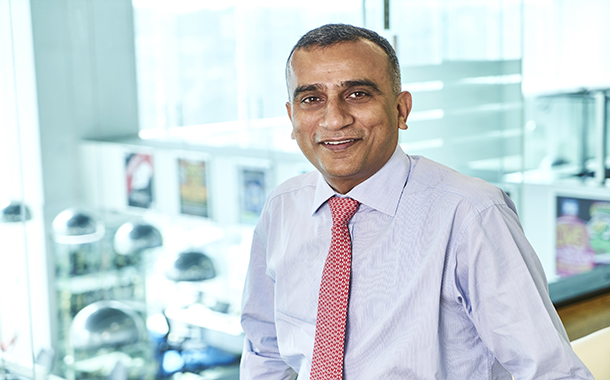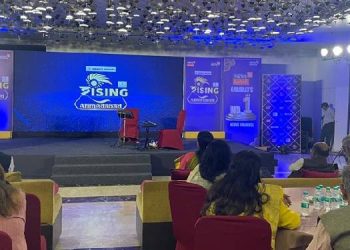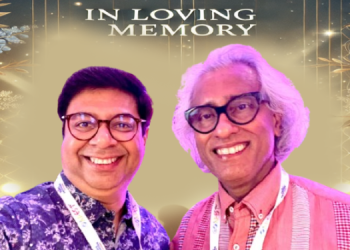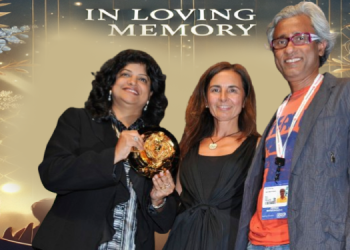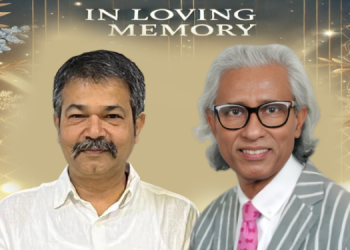Mr Sudhanshu Vats, Chairman – National Committee on Media and Entertainment, CII & Group CEO, Viacom18 delivered his inaugural theme address at the 5th edition of CII Big Picture Summit, 2016 under the theme ‘Embracing Disruption to Stay Competitive’
“Big Picture is one of my favourite industry events; favourite because it holds a special place in my heart. It was one of my first events when I became a part of this industry- at least – technically– given that I took over the reigns at Viacom18. I’d argue that all of India is part of this industry, given its role and scale”, said Mr Sudhansu Vats while expressing his attachment towards the event.
He elaborated the theme for this year’s edition ‘Embracing Disruption to Stay Competitive’ terming its a “quite a potent theme” and said,
- It’s a theme that explains how the sport of cricket reinvented itself 8 years ago to create a completely new avatar (called the IPL) that is arguably it’s most lucrative and successful one till date.
- It’s a theme that explains how a new Hindi GEC called Colors launched in 2008 and became number 1 in just 9 months of launch.
- It’s a theme that probably explains how a government owned distribution platform known as DD Freedish revolutionized the world of Indian television so much so that it is a topic of conversation in the boardroom of every M&E organization.
- It’s a theme that explains how a show idea rejected by MTV, led to the creation of one of India’s most iconic YouTube channels: The Viral Fever.
- It’s also a theme that explains why a telco called AT&T is expected to close a deal to acquire a media conglomerate called Time Warner in what is amongst this year’s biggest acquisitions. Of course, I’d like to see this as ‘convergence in action’ but more on that later.
He highlighted the contribution of M&E sector towards the country’s GDP and said, “Our knowledge partners- BCG- have worked hard to create yet another differentiated report. They’ve pegged our industry size at approximately 1,30, 000 crores. This puts us at almost 1% of the GDP with a direct employment base of half a million. If we look at indirect employment the number will multiply several times over. If we look at employment in sectors in which we have a multiplier effect, say telecom, tourism, sports and so on, and we are looking at a much larger base. If we have to, say double in size (and this is not impossible), GDP is growing at a breakneck speed, inflation is looking subdued, we’ve had a decent monsoon, GST is around the corner, successful spectrum auctions have ensured that 4G will truly bring in a revolution, ease of doing business is improving, political stability is a given- then there are three fundamental truths that we need to prepare for. Bear in mind, that none of these can be leveraged if we fear ‘destruction’. Each of these truths has significant implications for us”.
While stressing that Disintermediation is a business reality Mr Vats said, “We have often spoken about B2C business models. We need to prepare ourselves for a direct to consumer offering and one with direct access to talent if we are to succeed”.
- Today we often end up squabbling amongst ourselves. LCOs are fighting with MSOs, MSOs are fighting with broadcasters and so on. In all these squabbles, we need to ask ourselves what the consumer really wants and needs. The consumer is already finding value in OTT services.
- Similarly on the talent side. I truly believe that there is a bottleneck when it comes to the discoverability, nurturing and honing of quality talent. A large part of this is due to incumbents. There is this entire democratization story that unfolding in this space and my own sense is that incumbents refuse to accept it.
- For instance, Imogen Heap, a world-renowned musician, wants to use block-chain technology to create a ‘fair-trade’ music industry. This involves creating ‘smart content’ with inbuilt code that will sidestep streaming services and give musical talent greater control over their content and its monetization. She’s already founded Mycelia – an ecosystem aimed at exactly this.
While terming that Technology and Data our friends, not foes Mr Vats added, “We generally view technology/data and creativity as two sides of a coin. Instead, we need to see them as a potent currency that can revolutionise our success rates and monetisation.
- Let’s rethink the role of a Chief Digital Officer in our organisations. There’s always this constant ideological tug-of-war between those who claim that our business is only about human creativity and those who find themselves at the other end of the spectrum. This is not an either-or debate. It is an ‘and’ debate. Both insights are critical. At Viacom18, we call this a ‘guts+insight’ approach. Data is important, data doesn’t lie and data is objective. However, data can’t play the role of your intuition. Data also doesn’t have a job to loose!
- The other place where data and tech play important roles is that of monetization. In the new world we can only charge more for advertising if it is more targeted. A simple glance at the segmentation data available on TV viewership measurement and online, especially with the tech giants tells you clearly about the risk traditional entities face. On the other hand, VPNs can render geo-fencing of rights obsolete. Technology is the new frontier and we must conquer it.
- For instance, Everyone talks about how, at its peak, Pokemon Go has doubled the valuation of Ninetendo. Guess what- it has also reduced the time that would have been spent by its fans on consuming plain vanilla video content- on-air and online”.
Mr Vats stated that Media powers several economic ecosystems, way beyond its own and stated as following:
- “This is another personal favourite. Favourite event, favourite theme and favourite point. I’d like to make a contentious statement at this point. Our sector is amongst the biggest stars of the Make in India programme. Let me explain. I recently read that, in the last two years, India has seen 35 new smartphone factories, with a production capacity of 18 mn devices per month and employment to 37,000 Indians. While the focus here – at least in the popular context- is on telecom handset manufacturing, think about it- what is the use of the smartphone with a 5-inch screen if you don’t have video content? I have no qualms in stating that our industry will play the biggest role in the 4G revolution that this country is about to witness.
- We spoke about telecom. Let’s look at tourism. Travel and tourism in India, is a USD 150 Bn dollar industry, contributes to 9% of India’s employment – around 38 Mn jobs. Even back in the day, Shammi Kapoor’s Kashmir ki Kali led to an increase in tourists to Kashmir. Dil Chahta Hai drove tourists to Goa. We have recently partered with the Global Citizen Foundation for their first show outside the US, we expect tourism in Bombay to increase as a result of this.
- Take sports; without the value of media rights, how can we sustainably build the sports ecosystem. Take FMCG, leading companies spend more than 10% of the total sales on advertising. Take away media and you’re taking away their growth. The point I’m making is that we are far bigger than the sum total of our sub-sectors. Today we provide direct employment to 0.5 Million Indians. The indirect number is at least 5 times this. The multiplier number is possibly 10 times this.
Towards the end Mr Vats insisted the Policymakers to gear up for major changes in the Industry with liberal regulatory framework to adapt in an era of convergence and said, “My singular, humble request to policymakers is as follows- we need to look at our industry from the perspective of ‘convergence’. This alone will recognize our role as a force multiplier. I made this reference earlier in my address as well. Sooner or later we will see the kind of consolidation we are witnessing in the West. Some signs are already visible. Therefore the regulatory framework must pre-empt this and prepare for it. This means ensuring parity across different forms of media so that there is no regulatory arbitrage. Several distortions have been corrected in the recently released draft regulation. However, it must now move beyond simply ‘TV’ towards ensuring parity across platforms. This is particularly important given that our sector knows no borders. We are competing on a global stage and it’s a tough market. Complete freedom to price will unleash our creativity even further and equip us to compete with the best in the world. An even lighter approach towards regulation, where market forces play and even greater role will also help all players in the value chain compete on the basis of efficiency. While it is important to level the playing field we must be careful not to carve out too many rules that prevent incumbents from truly competing because the framework prevents innovation. I must also add, that the industry is extremely pleased with the pro-active, consultative approach of the government. It has set the ball rolling on regulations that have been around frozen for way to long”.
Mr Sudhanshu Vats structured his speech based on Schumpeter’s theory of ‘creative destruction’. Schumpeter is a well-regarded economist who argues that constant innovation destroys legacy economic structures to create new ones and so on.

